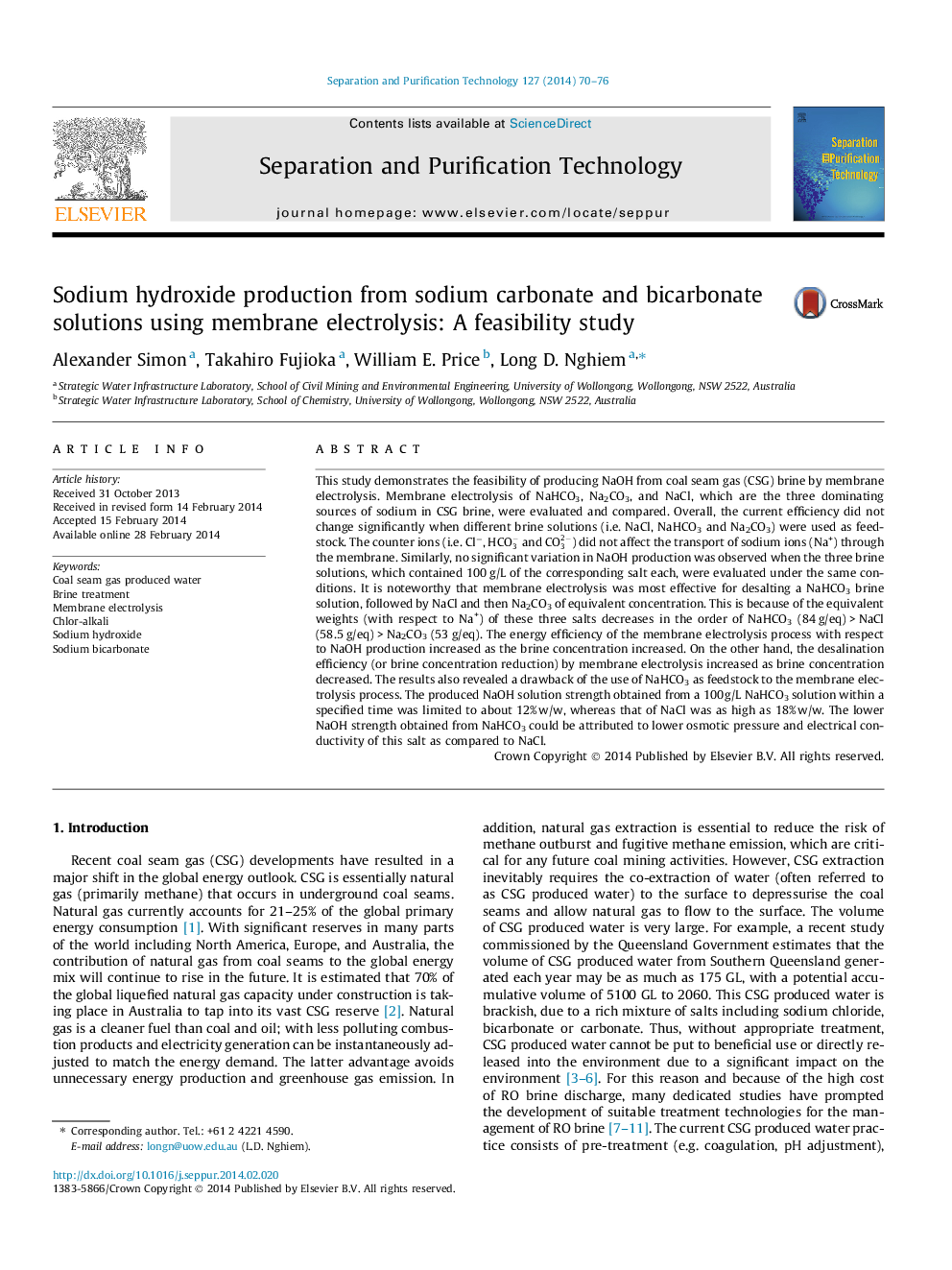| Article ID | Journal | Published Year | Pages | File Type |
|---|---|---|---|---|
| 641354 | Separation and Purification Technology | 2014 | 7 Pages |
•NaOH could be produced from NaHCO3 and Na2CO3 (which dominate CSG brine).•Current efficiencies when using NaCl, NaHCO3 and Na2CO3 as feedstock were similar.•Membrane electrolysis was effective for desalting NaHCO3 and Na2CO3 brine solutions.•Strength of NaOH produced from NaHCO3 was limited to 12% (wt/wt).
This study demonstrates the feasibility of producing NaOH from coal seam gas (CSG) brine by membrane electrolysis. Membrane electrolysis of NaHCO3, Na2CO3, and NaCl, which are the three dominating sources of sodium in CSG brine, were evaluated and compared. Overall, the current efficiency did not change significantly when different brine solutions (i.e. NaCl, NaHCO3 and Na2CO3) were used as feedstock. The counter ions (i.e. Cl−, HCO3- and CO32-) did not affect the transport of sodium ions (Na+) through the membrane. Similarly, no significant variation in NaOH production was observed when the three brine solutions, which contained 100 g/L of the corresponding salt each, were evaluated under the same conditions. It is noteworthy that membrane electrolysis was most effective for desalting a NaHCO3 brine solution, followed by NaCl and then Na2CO3 of equivalent concentration. This is because of the equivalent weights (with respect to Na+) of these three salts decreases in the order of NaHCO3 (84 g/eq) > NaCl (58.5 g/eq) > Na2CO3 (53 g/eq). The energy efficiency of the membrane electrolysis process with respect to NaOH production increased as the brine concentration increased. On the other hand, the desalination efficiency (or brine concentration reduction) by membrane electrolysis increased as brine concentration decreased. The results also revealed a drawback of the use of NaHCO3 as feedstock to the membrane electrolysis process. The produced NaOH solution strength obtained from a 100 g/L NaHCO3 solution within a specified time was limited to about 12% w/w, whereas that of NaCl was as high as 18% w/w. The lower NaOH strength obtained from NaHCO3 could be attributed to lower osmotic pressure and electrical conductivity of this salt as compared to NaCl.
